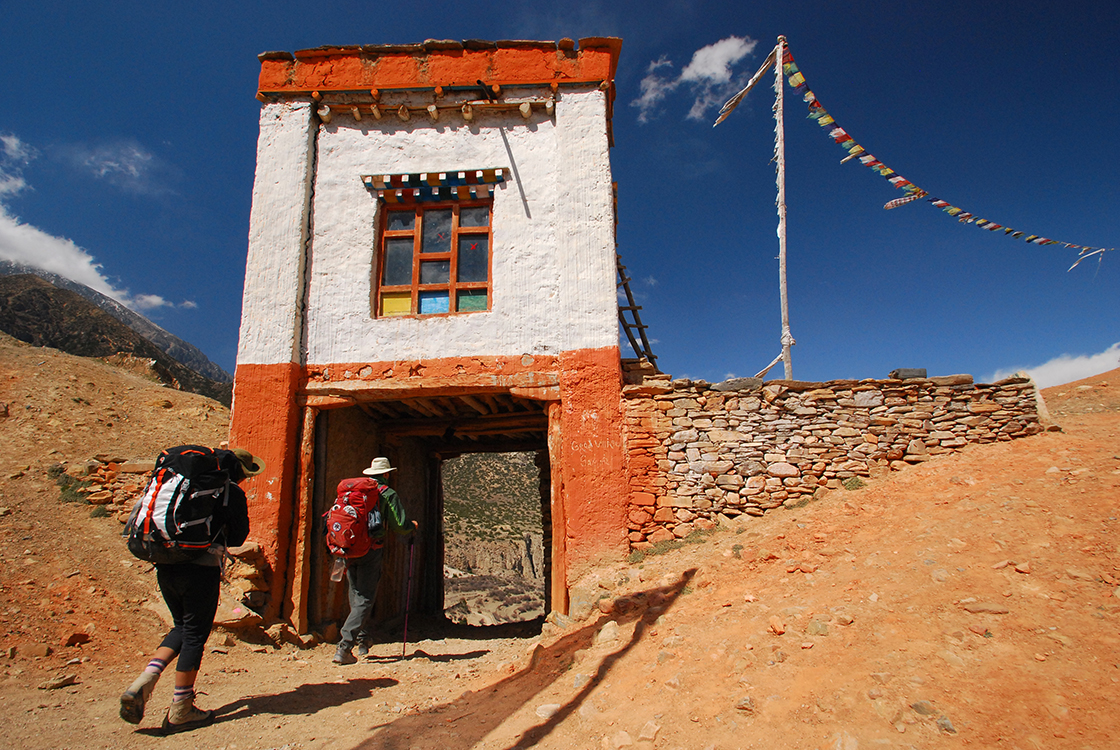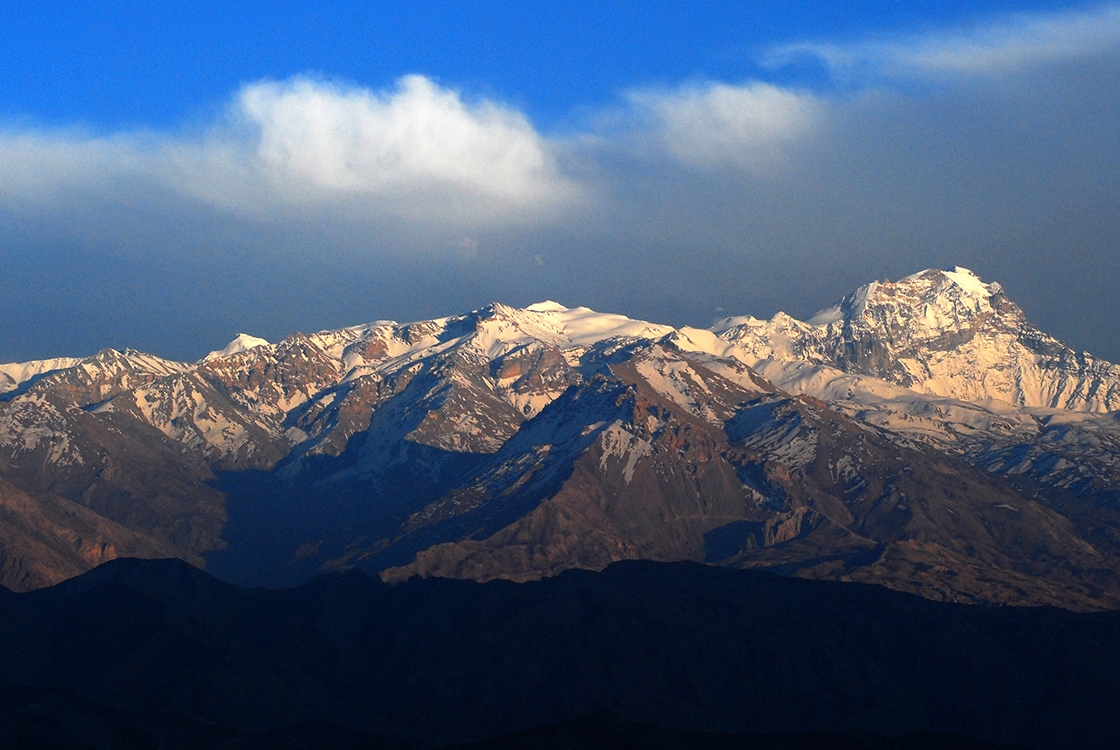Upper Mustang Part 2: Himalayan views and gateways

| DAY 2: Chele to Sarbochen |
We awoke the next morning in the small town of Chele, nestled on a ridge about 300 feet above the river bed and surrounded by a couple dozen bright green terraces of wheat. The fields were a surreal sight when we entered town the evening before – an oasis of lush green in an otherwise dry and warm-hued landscape. Mt. Nilgiri still greeted us from the south. It was the last we’d see it until our return; from Chele the trail turned west out of the kaligandaki gorge, climbing a narrow trail carved into a steep bluff. A small dry creek bed wound around the base 1000ft below. A single building – a school it seemed – occupied the gentle slope across the canyon from us.

We descended into the town of Samar for tea and lunch just as the wind picked up a small dust storm. We tucked into the first lodge we found for refuge from the wind. The front door opened into a small courtyard covered by transparent roofing, providing protection from the wind and rain while allowing welcome sunshine. A small girl smiled at me as I unbuckled my pack. I returned a warm grin.
We shuffled into the cozy dining hall to review the menu and give our food orders. Bench seats lined three walls, covered with thick, colorful sitting rugs. The low tea tables were painted with detailed scenes in the same palette of earthy hues used on the rugs and the window frames. A tall built-in shelf neatly displayed the family’s set of copper dish wear. While we waited for our food, I got up to stretch my legs and poke around, and the same girl who had greeted us in the courtyard approached me shyly. As she stretched her hand I expected her to ask nicely for some sweets, as most children do along the trail. But instead she opened her hand to offer me a dozen semi-squished of dandelions. Sweet child. I happily accepted, weaving the dandelions into the braids of my hair.


All of the village buildings were constructed in the same form and of the same materials: stone and mud brick, finished with a mud plaster and white-washed with a mineral slurry. Trunks of young birch trees served as beams to support secondary floors and roofs; roofs were finished with branches and meticulously smoothed mud. All windows had at least four lights – they’re made of four, six or eight panes with brightly painted wooden framing.

Our lunch lodge sat just outside the entry gate to the city. We would soon learn that having entry gates on both ends of a village is traditional in this region. The “gateways” generally had a similar form as a large chorten, but with an opening in the middle that barely clears the height of a man. Quite often a goat head dangles from the cross beam. The gates are said to provide luck to travellers. I’m not sure about the goat heads…

We spent the rest of the day climbing up and down canyons, summitting a 4000m pass by twilight. We couldn’t help but bask in the glory of a sun-kissed mountain view to the east despite our frozen fingers. A 270 degree view of rolling red ridges and snow-capped peaks. We ourselves were just about frozen by the time we made it the next 5 km to the next lodge, reaching just as darkness swallowed the landscape.

As their only guests, we talked our way into joining the owners for dinner in the kitchen, which had the distinct benefit of housing the only wood furnace. A small boy sat with us, adding dried goat pellets to the furnace now and again.
“Is he your son?” we asked, to make conversation.
“No. He came here 12 days ago.” The boy sat shyly, as if trying to ignore the fact that he had become the topic of conversation.
“We requested a worker to help us around the lodge. Someone brought this boy instead,” the lodge keeper explained. My friends and I tried hard not to allow the thought running through our heads to show – was he a child laborer then? The lodge keeper continued: “His mother was abandoned by her drunk of a husband. She was uneducated, and thus had little choice but to find a new husband in order to survive. Her new husband refused to keep the son of another man. So the boy was orphaned, with no where to sleep and nothing to eat.”
My internal thoughts changed dramatically. What would I have done in the same situation?
“Even if we could afford to send him back, what good would it be for him? We feed him and shelter him, and he does a few things around the house for us. We have two sons of our own who we can barely afford to keep in boarding school in Pokhara or we would do the same for this boy.”
Sarbochen, the lodge town, was the tiniest we’d seen yet – consisting of just two lodges and perhaps three homes. The closest public school must be at least 3 hours walk away. I felt empathy for the lodge keeper, and for the boy. Who’s to say the boy would actually be better off elsewhere? Many of the orphanages in Nepal are actually money making scams that barely feed children and house them in poor conditions (I’ve actually met with an NGO that works to rescue children from such establishments). He may not be in school, but at least he was being taken care of and, it seemed, treated fairly.

